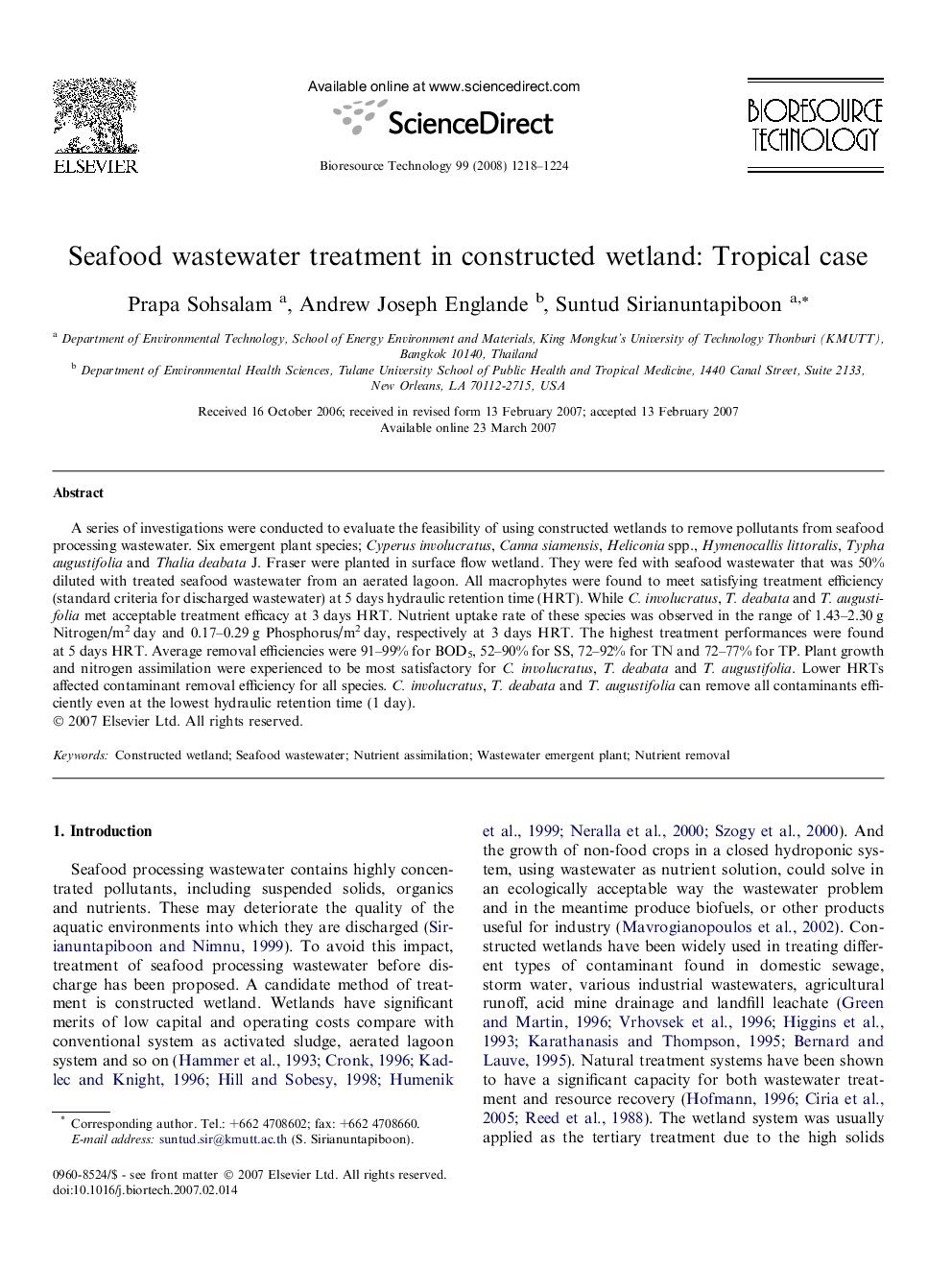| کد مقاله | کد نشریه | سال انتشار | مقاله انگلیسی | نسخه تمام متن |
|---|---|---|---|---|
| 685403 | 889039 | 2008 | 7 صفحه PDF | دانلود رایگان |

A series of investigations were conducted to evaluate the feasibility of using constructed wetlands to remove pollutants from seafood processing wastewater. Six emergent plant species; Cyperus involucratus, Canna siamensis, Heliconia spp., Hymenocallis littoralis, Typha augustifolia and Thalia deabata J. Fraser were planted in surface flow wetland. They were fed with seafood wastewater that was 50% diluted with treated seafood wastewater from an aerated lagoon. All macrophytes were found to meet satisfying treatment efficiency (standard criteria for discharged wastewater) at 5 days hydraulic retention time (HRT). While C. involucratus, T. deabata and T. augustifolia met acceptable treatment efficacy at 3 days HRT. Nutrient uptake rate of these species was observed in the range of 1.43–2.30 g Nitrogen/m2 day and 0.17–0.29 g Phosphorus/m2 day, respectively at 3 days HRT. The highest treatment performances were found at 5 days HRT. Average removal efficiencies were 91–99% for BOD5, 52–90% for SS, 72–92% for TN and 72–77% for TP. Plant growth and nitrogen assimilation were experienced to be most satisfactory for C. involucratus, T. deabata and T. augustifolia. Lower HRTs affected contaminant removal efficiency for all species. C. involucratus, T. deabata and T. augustifolia can remove all contaminants efficiently even at the lowest hydraulic retention time (1 day).
Journal: Bioresource Technology - Volume 99, Issue 5, March 2008, Pages 1218–1224